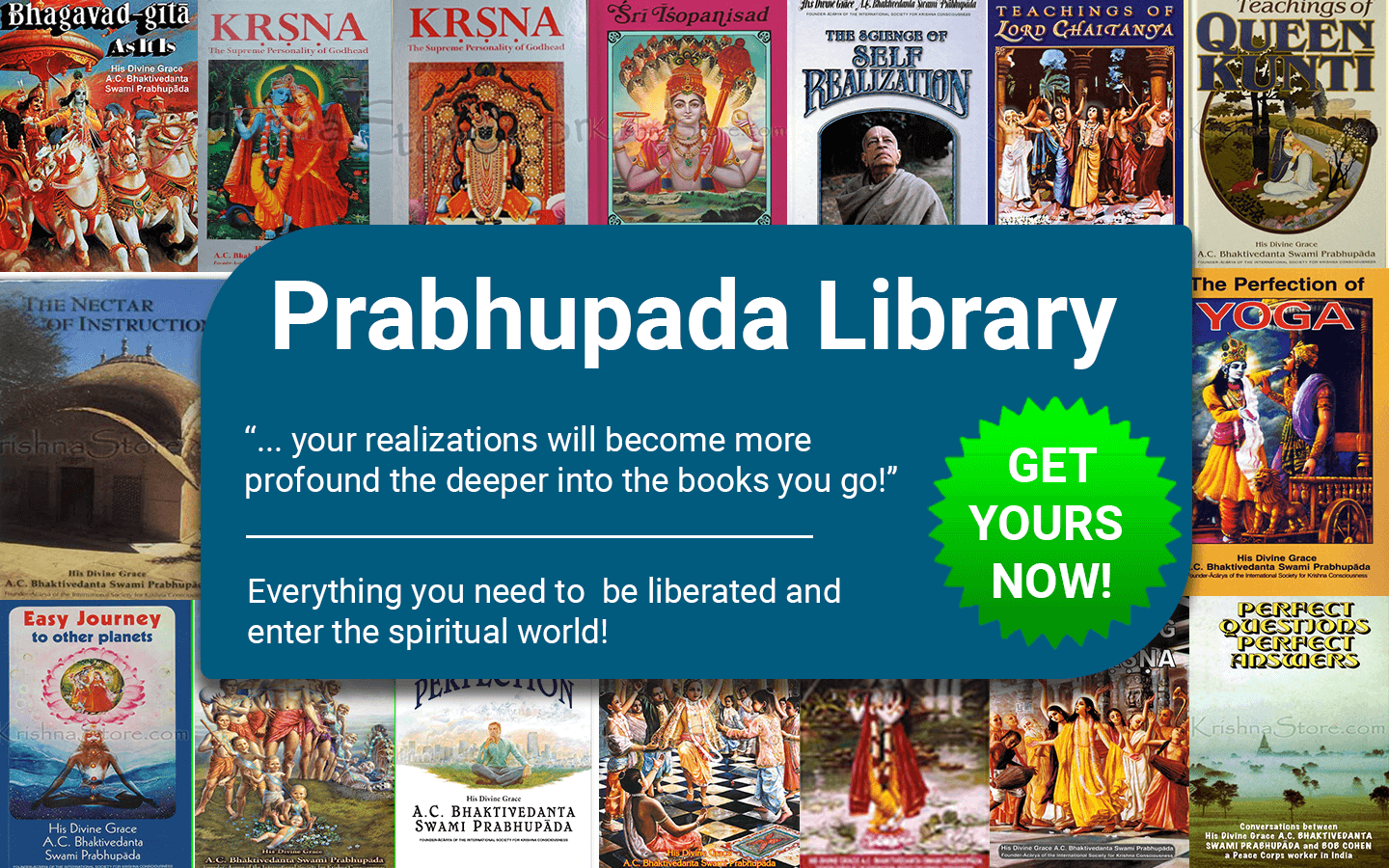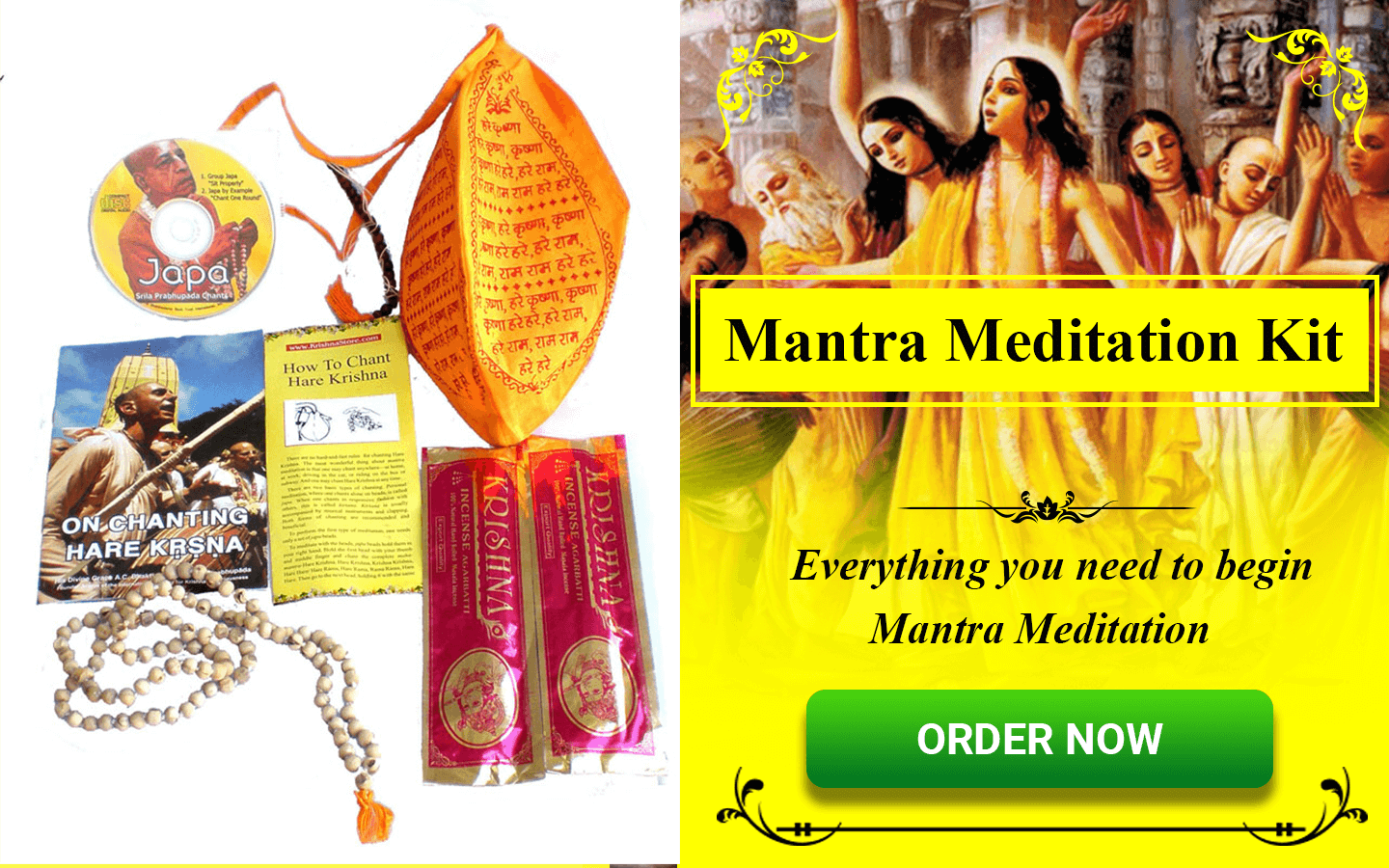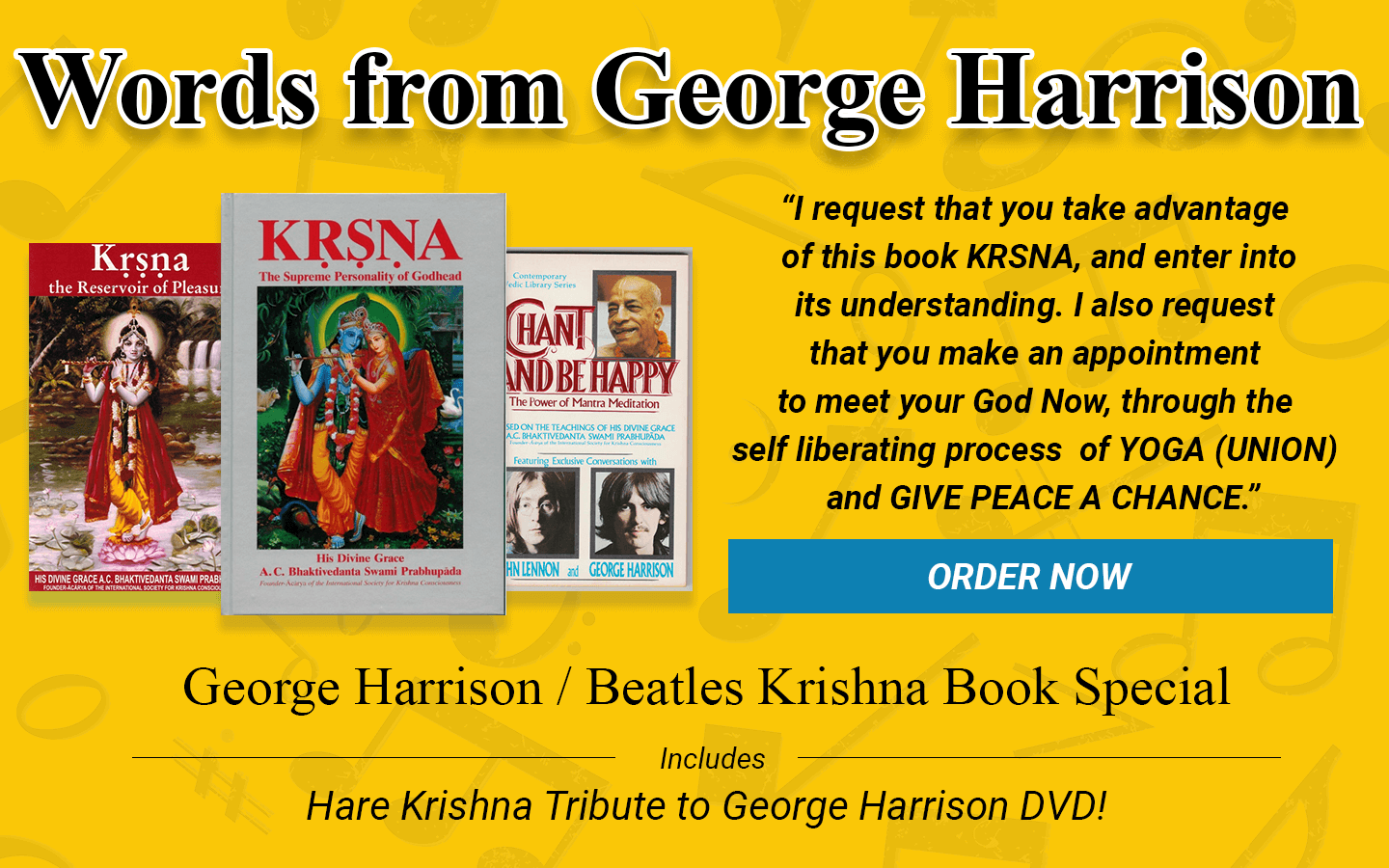Chapter 11: The Universal Form
Bg 11.49
TEXT 49
ma te vyatha ma ca vimudha-bhavo
drstva rupam ghoram idrn mamedam
vyapeta-bhih prita-manah punas tvam
tad eva me rupam idam prapasya
drstva rupam ghoram idrn mamedam
vyapeta-bhih prita-manah punas tvam
tad eva me rupam idam prapasya
SYNONYMS
ma—let it not be; te—unto you; vyatha—trouble; ma—let it not be; ca—also; vimudha-bhavah—bewilderment; drstva—by seeing; rupam—form; ghoram—horrible; idrk—like this; mama—My; idam—as it is; vyapetabhih—just become free from all fear; prita-manah—be pleased in mind; punah—again; tvam—you; tat—that; eva—thus; me—My; rupam—form; idam—this; prapasya—just see.
TRANSLATION
Your mind has been perturbed upon seeing this horrible feature of Mine. Now let it be finished. My devotee, be free from all disturbance. With a peaceful mind you can now see the form you desire.
PURPORT
In the beginning of Bhagavad-gita Arjuna was worried about killing Bhisma and Drona, his worshipful grandfathers and masters. But Krsna said that he need not be afraid of killing his grandfather. When they tried to disrobe Draupadi in the assembly, Bhisma and Drona were silent, and for such negligence of duty they should be killed. Krsna showed His universal form to Arjuna just to show him that these people were already killed for their unlawful action. That scene was shown to Arjuna because devotees are always peaceful, and they cannot perform such horrible actions. The purpose of the revelation of the universal form was shown; now Arjuna wanted to see the four-armed form, and Krsna showed him. A devotee is not much interested in the universal form, for it does not enable one to reciprocate loving feelings. A devotee wants to offer his respectful worshiping feelings; thus he wants to see the two-handed or four-handed Krsna form so he can reciprocate in loving service with the Supreme Personality of Godhead.
Copyright (c) 1972 by His Divine Grace A.C. Bhaktivedanta Swami Prabhupada











